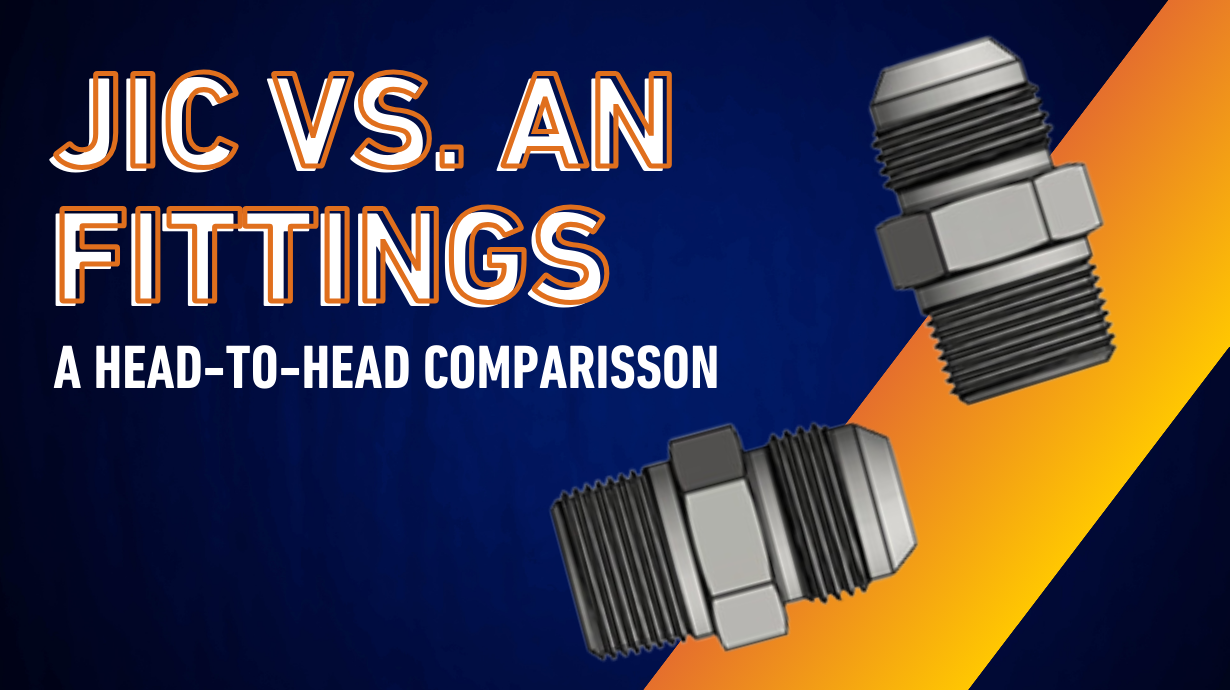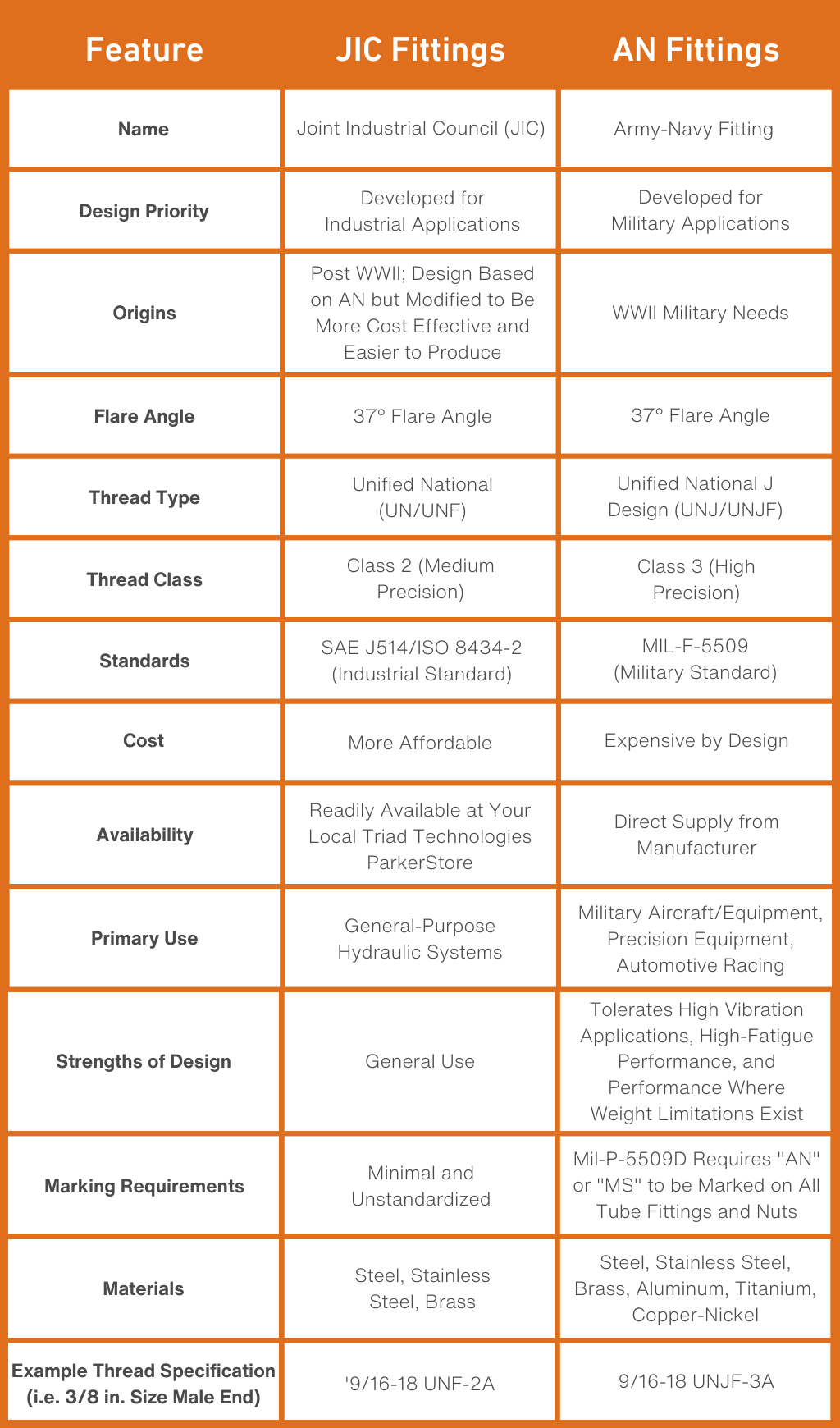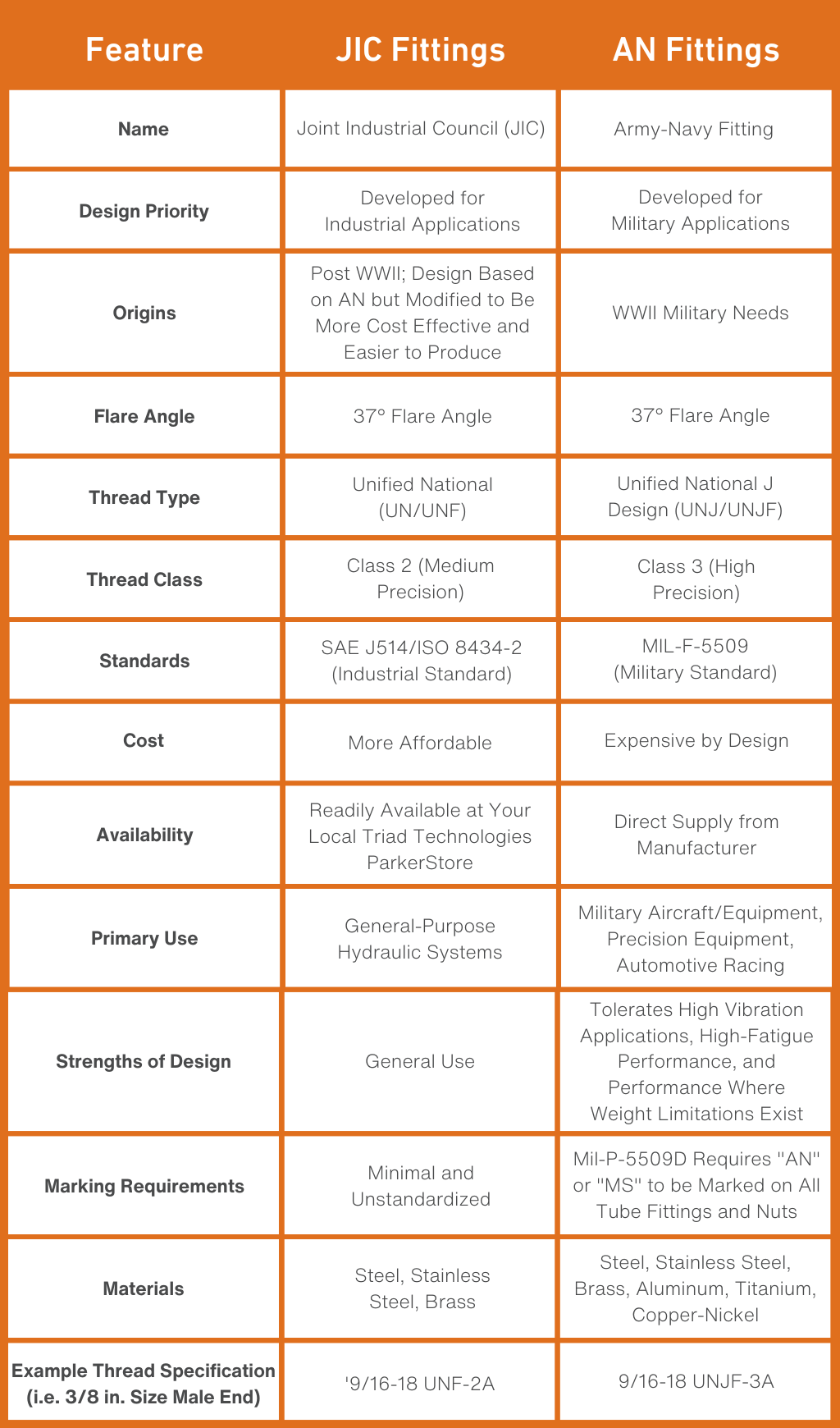JIC vs. AN Fittings: A Head-to-Head Comparison

JIC and AN fittings are both threaded fittings with a flared end which are used in hydraulic and pneumatic applications. Though these fittings are similar in appearance and will connect with one another, it is not advisable to use them interchangeably. To help you determine which of these fitting types is right for your application, we have highlighted key differences between the two below, as well as other considerations to ensure a proper use.


Using the wrong fitting between JIC and AN in your application can result in leaks, reduced performance, equipment failure, or injury, so it is important to use appropriate fittings.
Here are some additional tips for avoiding problems when using JIC and AN fittings:
Do Not Overtighten: Overtightening a fitting can damage the flare and cause leaks.
Inspect Fittings Regularly: Check fittings for signs of damage, such as cracks or loose threads. If you see any damage, replace the fitting immediately.
Don’t Cross-Apply Fittings: While both fittings utilize the same thread size, the thread shapes of JIC and AN fittings are not the same. AN fittings have a slightly different thread shape and tighter thread tolerances, giving the AN series a 40% increase in fatigue life and a 10% increase in shear strength when compared to JIC series threads. This makes the AN series appreciably more expensive to produce, but also provides higher performance and longer life, particularly in high vibration applications. Connecting AN fittings JIC damages the advantages built into the AN, degrading performance back to the level of JIC and resulting in a wasted investment.
What happens if I apply JIC Where AN Should be Utilized?
The JIC will provide a more limited fitting life, premature leakage, and increased downtime.
What happens if I apply AN Where JIC Should be Utilized?
The AN fitting will perform fine, but the user will have wasted the price premium that AN fittings command over JIC.
Which Type of Fitting is Right for You?
The best type of fitting for you will depend on your specific application and needs. If you are working on military aircraft or other high-precision equipment, or with an application with high vibration, then AN fittings are likely the best option for you. For general-purpose hydraulic systems, JIC fittings are often a better and more affordable choice. If you aren’t sure of the requirements of your application, the best way to find the right fitting is to consult with a qualified Triad Technologies specialist so we can help to identify the right parts for your application.